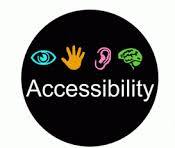In 2005, the Ontario legislature passed the Accessibility for Ontarians with Disabilities Act. It was passed with the intent of improving access to goods, services, facilities, accommodation, employment, buildings, structures and premises in Ontario for all individuals with disabilities.
The Act’s regulations are to be phased in gradually until January 1, 2025, affecting all private, public or not-for-profit organization, in particular for large private sector organizations that provide goods, services or facilities to the public.
To date, the first set of established requirements for large private sector organizations came into effect on January 1, 2012. These requirements set out the Accessibility Standards for Customer Service Standard, which prescribed the manner goods and services must be provided to individuals with disabilities, as well as require organizations to conduct mandatory training for all employees that are likely to interact with the public.
Accessibility policies
On January 1, 2014, the next phase of prescribed requirements under the Integrated Accessibility Standards regulation are set to come into force affecting large private sector organizations. Specifically, the regulation requires large private sector organizations to comply with the obligation to develop, implement and maintain policies that provide direction on how the organization achieves or will achieve accessibility. These policies should include a statement describing the organization’s commitment to meet the needs of persons with disabilities in a timely manner and also articulate in descriptive fashion how the organization will meet the regulation’s accessibility standards. This includes setting out the processes and measures to identify, remove, and prevent barriers; a review of efforts made to date and describe how accessibility will be made to the public. A description of the policies in one or more documents is also required for compliance.
Multi-year accessibility plan
A large private sector organization must also establish a multi-year accessibility plan, specific to the organization, which is the strategy to prevent and remove barriers for disabled persons in the present and in the future. The plan must be reviewed and updated no less than once every five years. Given that the regulations for the Integrated Accessibility Standards are to be phased in over the next few years, it is recommended that every large private sector organization conduct a yearly audit to ensure that the accessibility plan conforms to any new regulations.
Websites
Large organizations are also required to ensure that new websites or those with an existing domain name but undergoing a significant refresh (new look, navigation and/or change to content) to comply with WCAG 2.0 Level A. The WCAG is the international standard for making websites and website content more accessible to disabled persons.
Small private sector organizations
Smaller private sector organizations, those with one to 49 employees have until January, 2015 to comply with the accessibility policy requirement.
Additional rights
It should be understood that the Act and its regulations do not replace or limit an individual’s rights under Human Rights Code (Ontario), rather are additional rights and protections afforded to individuals in Ontario and should be read in conjunction with all other legislation in the province.
Enforcement of the Act
The Act has extensive enforcement powers to ensure that all organizations are diligent in their compliance. Some of the rights conferred by the Act include the right of inspectors to enter the premise of a business organization, the right to seize written documents and the authority of the Accessibility Directorate of Ontario to levy administrative penalties and monetary fines.
The AODA is very important to follow, to see more from this article go to theSpec.
